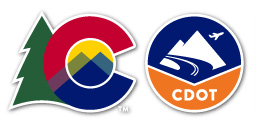Global credit bureau Equifax adopted Gemini to enhance productivity while strengthening its security posture.
/ Learn moreColorado Department of Transportation streamlines retaining & noise wall inspections

/ AT A GLANCE
SADA came on board the mobile app development project mid-stream, after several other developers had failed to deliver a suitable application.

INDUSTRY Government & NGO
COSTS Decreased
EFFICIENCY Boosted

Overview & challenge
The Colorado Department of Transportation (CDOT) maintains, repairs, and plows over 23,000 total lane miles of highway and oversees 28 billion miles of vehicle travel annually. With 58% of the agency’s budget going towards maintaining heavily used, mountainous roads that endure some of the most brutal weather conditions in the country, efficiency and optimization of funds are crucial.
Chief Engineer Josh Laipply realized that CDOT needed a more accurate, cost-efficient way to catalog and collect inspection data on the state’s extensive inventory of freeway noise reduction and retaining walls. At the time, the agency’s inspection procedures were archaic, suffered from high administrative overhead, and were prone to redundancy and collection errors.
CDOT partnered with Collins Engineers to design a risk-based inspection program to include a web-based data management system to store inventory and inspection information, with an accompanying mobile application that engineers could use to input inspection data in the field. The new system had to integrate with CDOT’s current Bridge Management (BrM) and National Bridge Inventory System (NBIS) databases.
“Specifically, one of the main things we wanted was a GIS interface and the ability to look at all of our structures spatially,” explains Natasha Butler, PE, Bridge Asset Manager, CDOT and former PM for Collins Engineers during the walls app project. “We hadn’t seen this very often for use with inspections.”
Solution
SADA came on board the mobile app development project mid-stream, after several other developers had failed to deliver a suitable application. “Any time developers and engineers are working on a project together, challenges will arise. The devs have specific ideas about how to do their work, but the engineers do things very differently,” explains Michael Collins, PE, State Bridge Engineer, CDOT. “Sitting down and trying to hammer out the project scope and cost was extremely challenging for every developer involved in this project. SADA really helped us get on our feet with the redevelopment. They identified what we wanted, how to make it work, and how to do it even better. They did a nice job of grabbing makeshift dev and redeving it to make the environment better.”
Once SADA came onto the project, they launched a discovery phase where SADA’s developers worked with engineers from Collins to understand what was already in play, what was working, and what wasn’t working.
“They came up with a very quick timeline with short sprints and a quick turnaround to redevelop what was already there. It was very focused.”
– Michael Collins, PE, State Bridge Engineer, CDOT
The walls application has two components, one web-based and one tablet-based. The web app is hosted on Google Compute Engine (GCE) with an Nginx web server and a Postgres database for data storage. The user interface is built in Angular JS and utilizes Python Django for backend processing of all activities occurring on the website. The tablet application is built on the Android mobile OS and uses PHP for backend processing.
The app was developed under real-world conditions. As SADA worked on it, engineers tested it out live in the field, performing inspections and notifying SADA when they encountered bugs. One problem surfaced when the app was used in edge conditions where internet service was unavailable. “We had a really hard time getting the app to work when there was no service,” Butler says. “There were times when the app would crash while we were out in the field, and I would email the point person at SADA. One morning, I was driving down I-70 and talking to the SADA rep, who was literally helping me troubleshoot the app as her baby sat on her lap! SADA understood our needs, and they put a good foot forward to deliver what we were looking for.”
“There are always problems with dev projects. When bugs showed up, SADA was really good about getting on them and making sure they didn’t break any other things in the app while fixing the bugs. The quality of work from SADA was much better than what we’d previously encountered.”
– Michael Collins, PE, State Bridge Engineer, CDOT
Benefits
Through the mobile app, CDOT personnel can now access inspection and maintenance records and data on over 1,600 noise reduction and retaining walls abutting CDOT’s roadways. “Everything having to do with inspections is in there and being managed, and all CDOT personnel have access to it. It’s not siloed anymore; we didn’t have that before,” Collins explains.
By having engineers collect data on site using the mobile app, CDOT has reduced both errors and costs; engineers and repair personnel spend less time in the field because the entire process can move more quickly. Additionally, because the mobile app allows for faster data-gathering, CDOT can analyze it more quickly and identify areas that require repair or resegmenting more quickly, which reduces risk for both CDOT field employees and the general public on the roads.
The walls app was built on Google Cloud Platform, and Collins reports that its functionality “has been working great, and it scales beautifully. When I was working at Collins, we were pushing to expand it to use with other assets and other programs.”
The quality of work from SADA was much better than what we’d previously encountered.”
— Michael Collins, PE, State Bridge Engineer, CDOT
More customer stories
What we're up to
Solve not just for today but for what's next.
We'll help you harness the immense power of Google Cloud to solve your business challenge and transform the way you work.

